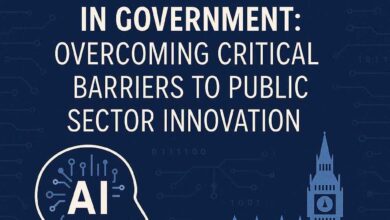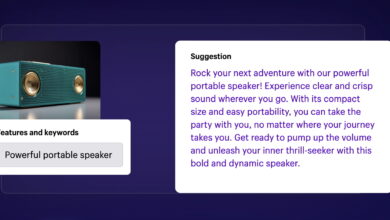
The recent USAID funding cuts have made one thing painfully clear: the nonprofit sector cannot afford to rely on traditional funding models alone. While the immediate impact is severe, this moment also forces a much-needed conversation about resilience, modernisation, and the role of technology in shaping the future of humanitarian work.
Some organisations will downsize, while others may shut down entirely. Some will however be driven by necessity to reinvent humanitarian work, placing technology at the heart of this evolution.
AI is already transforming philanthropy, offering nonprofits new ways to allocate resources, improve decision-making, and scale their impact. But while AI holds enormous promise, it is not a silver bullet. It cannot replace humanitarian aid, rebuild communities after disasters, or substitute for direct financial commitments.
What it can do is fundamentally reshape how nonprofits operate—making them more agile, transparent, and equipped to navigate an increasingly complex world. The challenge is ensuring that AI is accessible and ethically safe, rather than becoming just another tool that benefits the largest, most well-resourced companies while leaving smaller nonprofits and social impact organisations struggling to keep up.
AI as a catalyst for a more effective nonprofit sector
For years, the humanitarian sector has struggled to modernise. Many nonprofits operate with limited resources, outdated systems, limited access to data, and administrative inefficiencies that slow down their ability to respond to crises. AI unlocks a much-needed way to change that paradigm—not by replacing existing funding but by maximising the impact of every dollar spent.
In some cases, post-disaster decisions are vital to lay the groundwork for long-term recovery. After all, the speed we respond in an emergency can determine the difference between life and death. AI significantly enhances post-disaster response by providing advanced data analysis and decision-making support. This is a key motivation behind what we do at Tech To The Rescue (TTTR).
Organisations that have embraced AI and are already seeing results include the White Helmets’ AI-powered disaster response platform, developed in partnership with Cloud Primero and Twilio, uses satellite imagery and real-time reporting to prioritise search-and-rescue operations in conflict zones and cut response times by 30 percent.
ACAPS’ SOPHIA AI, created with Alio IT, processes multilingual crisis data to improve humanitarian decision-making, reducing the time it takes to analyse and distribute critical information. Meanwhile, the World Institute on Disability (WID) is using AI to build an emergency resource-matching system, ensuring that aid reaches disability-led organisations faster than ever before.
These are not theoretical possibilities—they are happening now. AI is already proving that when designed with impact in mind, it does not replace the work of nonprofits—it accelerates it.
The nonprofit AI divide: who gets left behind?
Despite AI’s potential, there is a real risk that it will deepen existing inequalities within the sector. Advanced AI systems remain expensive, technically complex, and largely developed for corporate efficiency rather than social impact. Without deliberate effort, there is a danger that AI will become yet another resource available only to large, well-funded organisations while smaller nonprofits struggle to keep pace.
This is why accessible AI models matter. New developments like DeepSeek offer lower-cost alternatives, potentially making AI more widely available. But they also come with trade-offs—DeepSeek is not fully open-source, raising concerns about transparency, and it follows Chinese content policies, which could impact information accessibility.
These factors underscore a broader issue: nonprofits should not be passive adopters of AI. They must have a seat at the table in shaping AI solutions that align with their missions. The responsibility to bridge this gap does not rest solely on nonprofits. The tech industry must step up—not just with funding but with meaningful collaboration to build AI that works for the nonprofit sector.
What role should tech companies play?
For too long, big tech AI development and nonprofit needs have existed in separate worlds. This is why the likes of AWS and Google.org, have recently sponsored programmes to connect over 110 mission-driven organisations worldwide with pro bono tech expertise, enabling them to deploy AI in disaster management, climate action, health, economic opportunity and education.
A particularly significant component of this effort is the Now Go Build CTO Fellowship, led by AWS CTO Dr Werner Vogels. This programme goes beyond providing tools—it’s about equipping selected nonprofit CTOs with top leadership insights and strategic mentorship. By investing in nonprofit technology leadership, the Fellowship bridges a critical gap, ensuring that mission-driven organisations are not just passive adopters but active architects of how AI is supporting their impact.
These initiatives are proof that when tech companies move beyond one-off donations and engage directly in capacity-building, real change happens. But philanthropy cannot afford to wait for goodwill—it needs tech companies to recognise that AI for good is not charity; it is a business imperative that strengthens global resilience.
The future of AI in philanthropy
The next decade will define whether AI becomes a tool for true democratisation of resources or whether it reinforces existing barriers. If AI is going to fulfill its potential in philanthropy, three things must happen:
First, nonprofits need to take an active role in shaping AI solutions, ensuring that these tools serve their missions rather than forcing them to adapt to technology designed for other industries.
Second, AI development must prioritise accessibility. This means investing in open-source models, reducing cost barriers, and ensuring that AI literacy is as much a part of nonprofit leadership as fundraising or program management.
Finally, tech companies must move beyond traditional CSR approaches and recognise the strategic value of investing in nonprofit AI adoption. The companies that embed AI for good into their core operations will not only drive social impact—they will build more ethical, sustainable, and globally relevant AI systems in the process.
AI is not a replacement for philanthropy. It is a force multiplier that, if developed and deployed responsibly, can transform how nonprofits operate and how resources are allocated worldwide. The question is not whether AI will shape the future of philanthropy—it is whether we will make the right choices today to ensure it benefits those who need it most.
Now is the time to decide.





